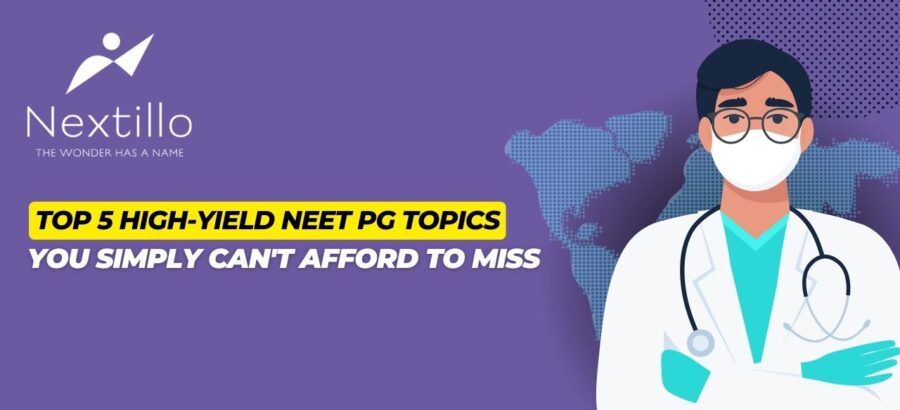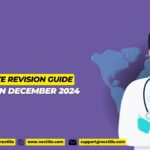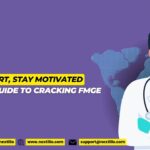In this blog, we shall take you through the top five high-yield topics for NEET PG that are commonly asked during the exams and relevant to everyday clinical practice. It’s a series of basic concepts on various subjects, and it will make you face theoretical and clinical scenarios.
Gross Anatomy of Upper and Lower Limb.
Though anatomy looks gigantic, the anatomy of the upper and lower limbs itself occasionally appears in NEET PG. A candidate should know about fractures and injuries related to nerves.
Why You Need to Know It:
This subject serves as the foundation for both clinical and surgical questions.
Knowing the nerves, muscles, and blood vessels of the limbs will help you tackle questions involving common conditions such as compressing nerves or injuries to limbs.
Detailed testing is usually subjected to concepts that include the brachial plexus, sciatic nerve, and anatomy of the shoulder.
How To Approach It:
Of course there are pictorial aids. Diagrams will help trace out the nerves and muscles.
Read cases of nerve damage, such as Erb’s palsy and carpal tunnel syndrome, to see how anatomy applies to these scenarios.
Read more:- Master Preclinical Subjects for NEET PG: Important Topics
Pharmacology of Autonomic Nervous System (ANS)
While it is seen as a huge beast in the heavy undertaking of pharmacology in terms of drugs, mechanisms, etc., one place where the ANS regularly features in NEET PG is high-yield itself; it’s most directly related to clinical medicine and basic pharmacology.
Why You Need to Know It
This would form the central mechanism for understanding the action of several drugs, especially in critical care.
Many drugs are experimented upon, for instance, beta-blockers, anticholinergics, and sympathomimetics.
All of these questions are related to clinical scenarios such as hypertension, bronchial asthma, or glaucoma, so it is not just pure theory-you have to know their applications.
How to Approach It:
Break this down into sympathetic and parasympathetic divisions of the ANS. Know which drugs activate or block such systems.
Flashcards Use these to quick recall drug mechanisms and side effects, especially in really tricky drugs like alpha-2 agonists or muscarinic antagonists.
Read more :-Master Paraclinical Subjects for NEET PG: Important Topics
Cardiology: Structural Congenital Heart Diseases and ECG
Cardiology can be a scary subject, but if you focus on two core areas—congenital heart diseases (CHDs) and ECG interpretation—you’ll cover a lot of ground in both theory and clinical practice.
Why You Need to Know It:
Some of the CHDs frequently represented in theory and case-based questions include the Tetralogy of Fallot, Atrial Septal Defect, and Patent Ductus Arteriosus.
This is a skill that’s useful in diagnosing conditions from just a myocardial infarction to just arrhythmias. So questions will often ask you to read an ECG strip and make a diagnosis, making this an extremely high-yield topic.
How to Approach It:
The basics for CHDs include knowing the difference between cyanotic vs acyanotic defects and how these present clinically in a patient.
Always practice reading strips of ECGs as much as possible. Memorize all common patterns, such as ST-elevation, atrial fibrillation, and heart blocks.
Infectious Diseases: Tuberculosis and HIV/AIDS
In any clinical scenario, infectious diseases continue to be highly relevant, specifically tuberculosis and AIDS. These are high-yield topics for NEET PG but equally important for real-life practice.
Why You Need to Know It:
TB continues to be a public health problem in India, and the questions usually revolve around the diagnosis procedures, treatment steps, and drug resistance.
The test is highly carried out for HIV/AIDS, especially concerning the management of co-infections like TB between HIV-positive patients.
How to Approach It:
For TB, focus is put on diagnostic techniques such as the GeneXpert test and first-line treatment drugs (such as rifampicin and isoniazid). One will also need to understand multi-drug-resistant TB (MDR-TB) and its treatment.
One can focus on the staging of the disease, common opportunistic infections, and the principles of ART for HIV.
Read more:-Must-Know Medicine Topics for NEET PG and FMGE Success
Surgery: Trauma and Acute Abdomen
Among the high-weightage items in NEET PG, trauma and acute abdomen form two of the most frequently tested subjects under this header. Having knowledge of how to approach these cases can give you a competitive advantage, as they will often challenge both your clinical reasoning and factual recall.
Why You Should Know This:
It varies from initial assessment care up to complex ATLS protocols, so this really must be known to the worker.
The acute abdomen is another high-yield area. The ability to diagnose appendicitis, intestinal obstruction, or perforated ulcers is necessary. How to Approach It: For trauma, master the ATLS guidelines, especially how to assess and stabilize trauma patients. Knowing how to prioritize the treatment of multiple injuries can earn you easy points. In cases of acute abdomen, focus on clinical signs from Murphy’s sign in cholecystitis or McBurney’s point for appendicitis. It also requires understanding the basics of diagnostic imaging, including which situation warrants an ultrasound or CT scan.
Read more: Surgery for NEET PG and FMGE: Top Topics and Preparation Tips







